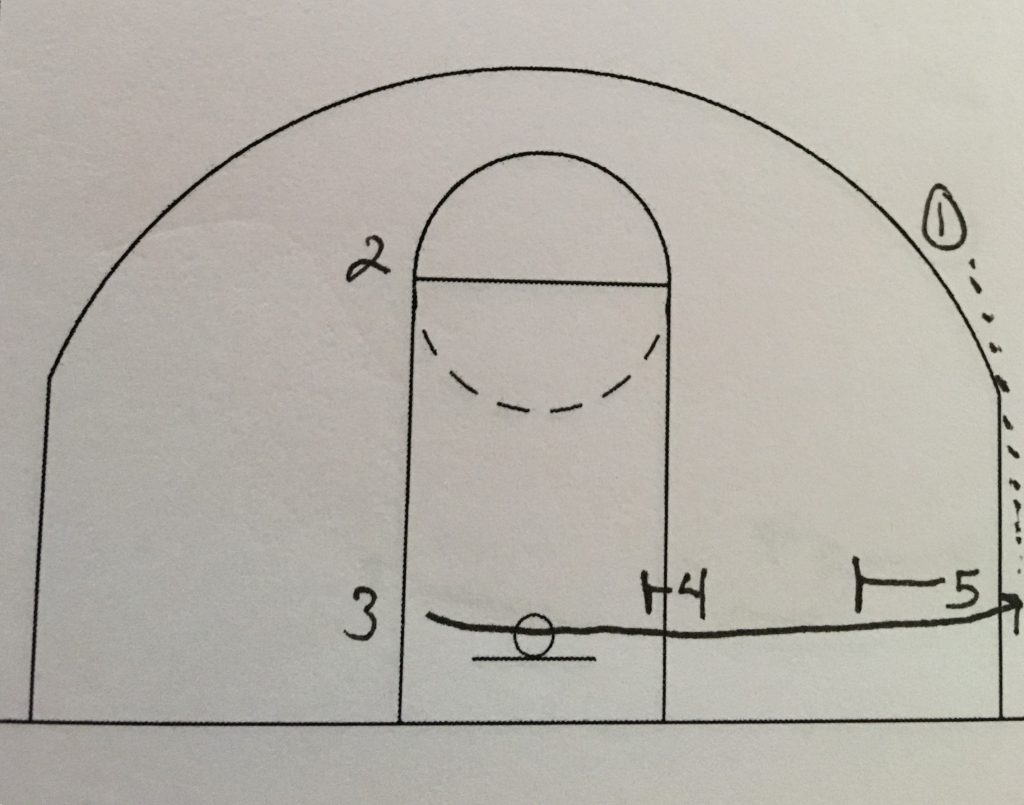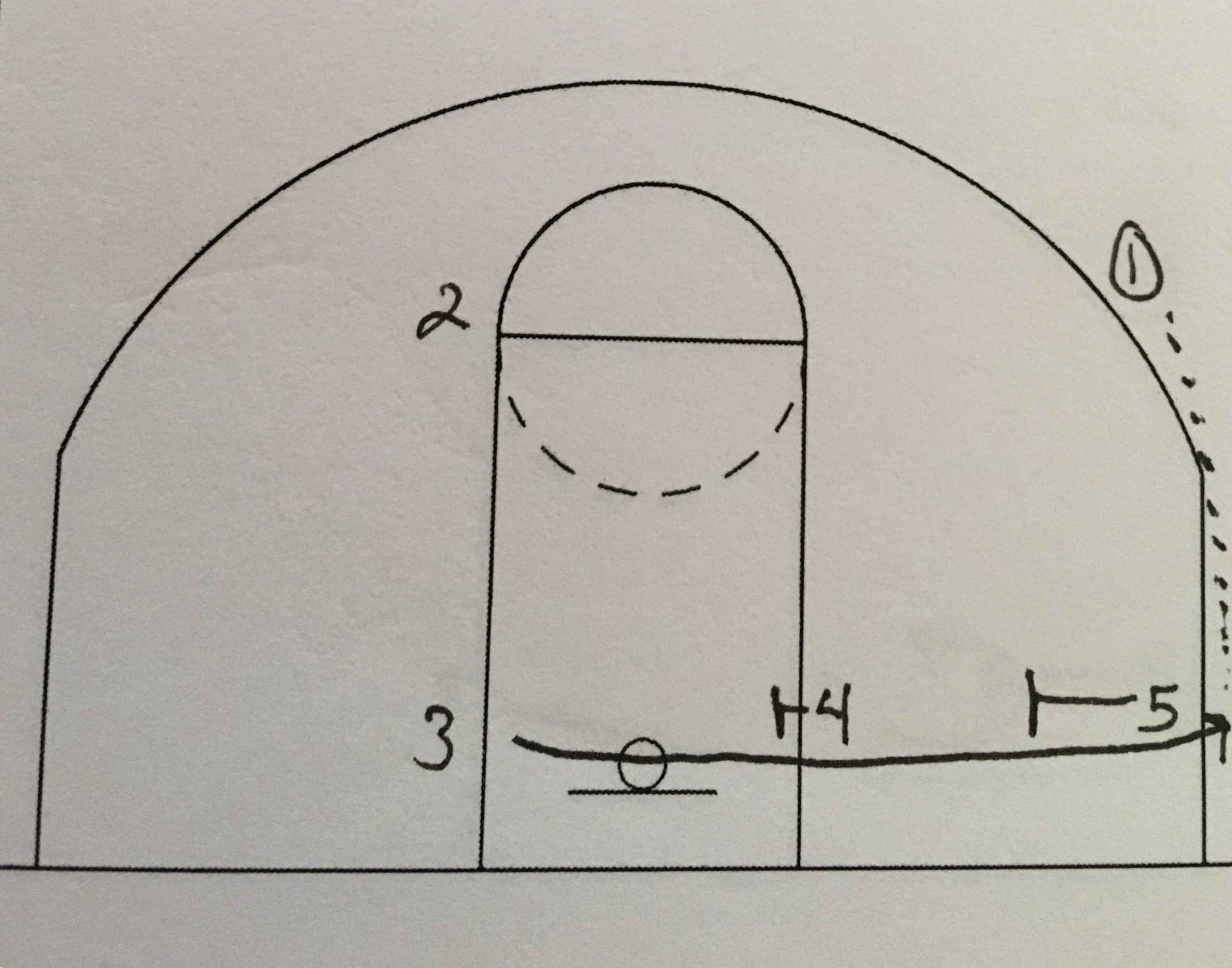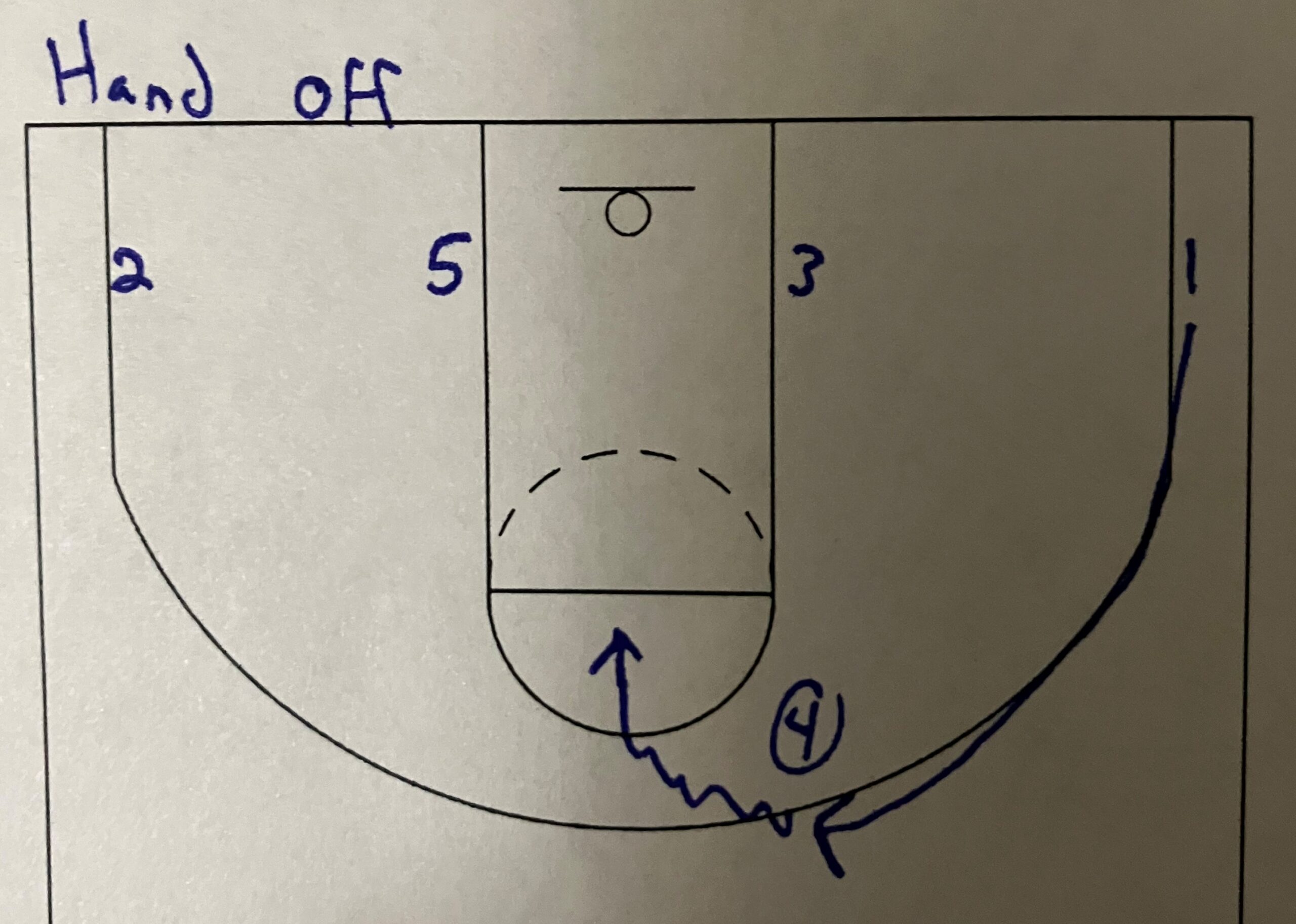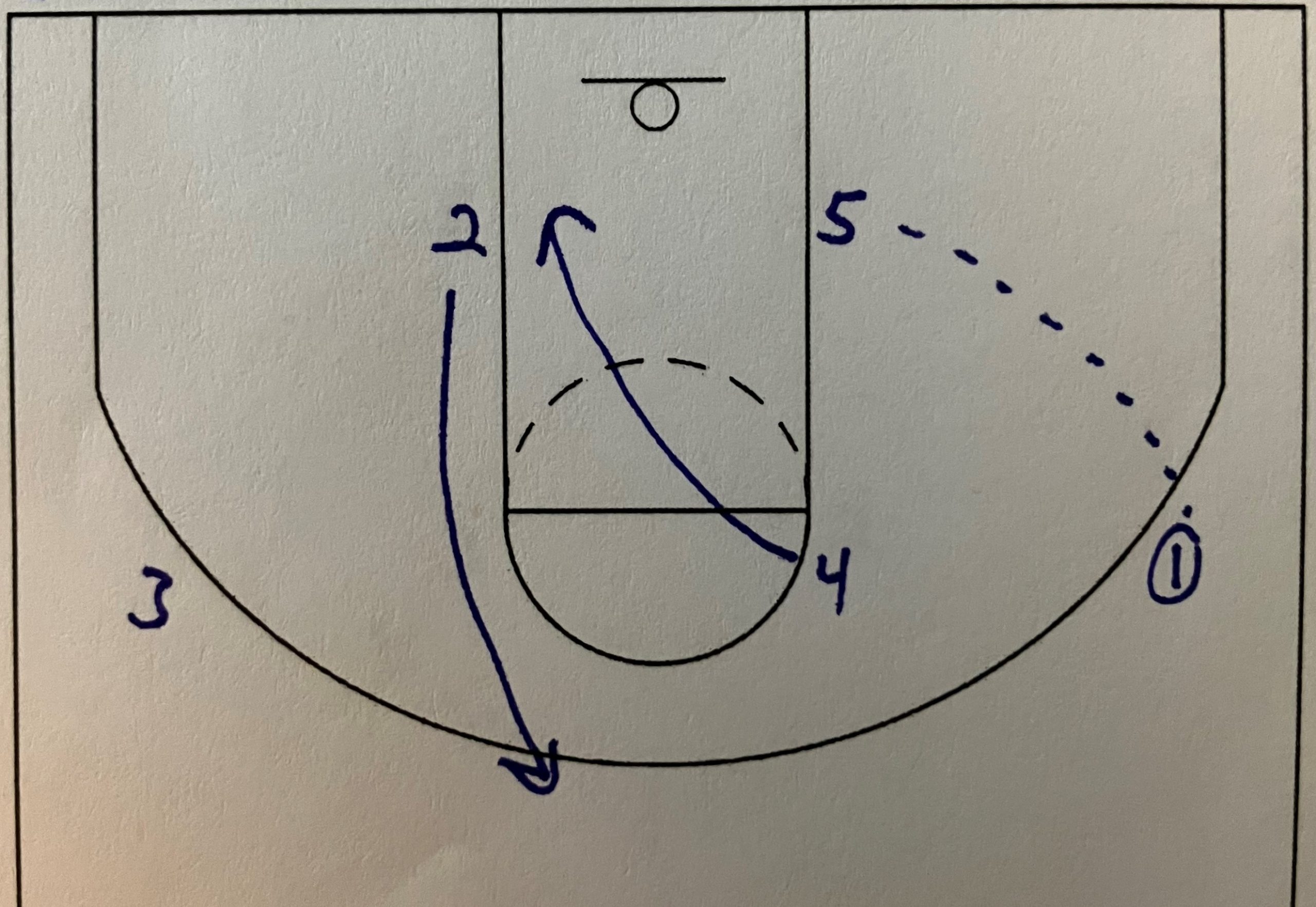A lot of BLOB plays have the shooter start as the inbounder. By simply changing the location of the shooter at the start of the play, the offense can catch the defense focused on a player that is not the primary scoring option. The offense can use the in-bounder in different ways to help a play be more effective.
This BLOB is using the in-bounder as a screener rather than a shooter. It is also using a double screen to help the shooter get open. This play is doing a couple of things to hopefully catch the defense focused on different areas of the offense and not who the play is designed to get a shot.

The BLOB play starts in a standard box formation. In the diagram above, I have the big(4) taking the ball out and the center(5) right in front of the in-bounder on the block. The forward(3) is on the opposite block and is the shooter for the play. The point(1) is on the ballside elbow who will be making the pass to the forward(3) for the shot.
I put the big(4) and center(5) is those spots because I want the two biggest players being the two setting the double screen for the shooter. If the big(4) is not a player who is comfortable taking the ball out then a switch with the guard(2) and big(4) will not change the play at all.
I want the point(1) is that spot because I want the point(1) making the decision on whether to pass the ball to the forward(3). If the defense jumps out to the corner, then the point(1) should be able to read it and not make the pass. Without the pass, the offense has the ball is the point’s(1) hands to set up the offense. This helps to bridge the transition between the BLOB and motion offense if necessary.
To start the BLOB, the center(5) cuts out to the corner for the entry pass. The point(1) cuts out to the wing. The center(5) catches the in-bounds pass and turns and passes it up the sideline to the point(1). After throwing the ball in, the big(4) steps into the block. After passing the ball to the point(1), the center(5) will step towards the middle of the court.

The forward(3) is making the baseline run using the big(4) and center’s(5) double screen. The point(1) passes to the forward(3) for an open 3-point shot. The big(4) is working towards rebounding position after their screen. The guard(2) should be trying to get into good rebounding position after the forward(3) makes their run to the corner.
The entire backside is going to be empty except for the guard(2) and their defender. Any missed shot that goes long is more than likely going to be rebounded by either the guard(2) or their defender. This is a spot where a good rebounding guard can get a put back basket with good rebounding position.
Conclusion
This BLOB play is working similar to BLOB 12 and BLOB 13 but it is attacking the defense in a different way then those two other BLOB plays. The offense is looking to get an open corner 3-point shot in each play, but each play is a little different in how the offense is looking to get that open corner 3-point shot. A team never wants to get so repetitive on offense that the defense knows every play the offense is running. By making subtle changes, the offensive concept can stay the same but the movement is different to keep the defense from knowing exactly what is happening.
In high school with the long season, a team can keep switching between these plays throughout the year. By switching plays through the season, the scouting done by a team early in the season is not going to work at the end of the season. The offense has changed enough that if new scouting hasn’t occurred, then the opponent will not be prepared for the new plays.
At the youth level, teams may be playing the same opponents frequently. By changing the plays every week or every other week, opponents are never able to get into a comfortable defensive setup because the offense has changed. This keeps the defense guessing and the BLOB plays still working.




